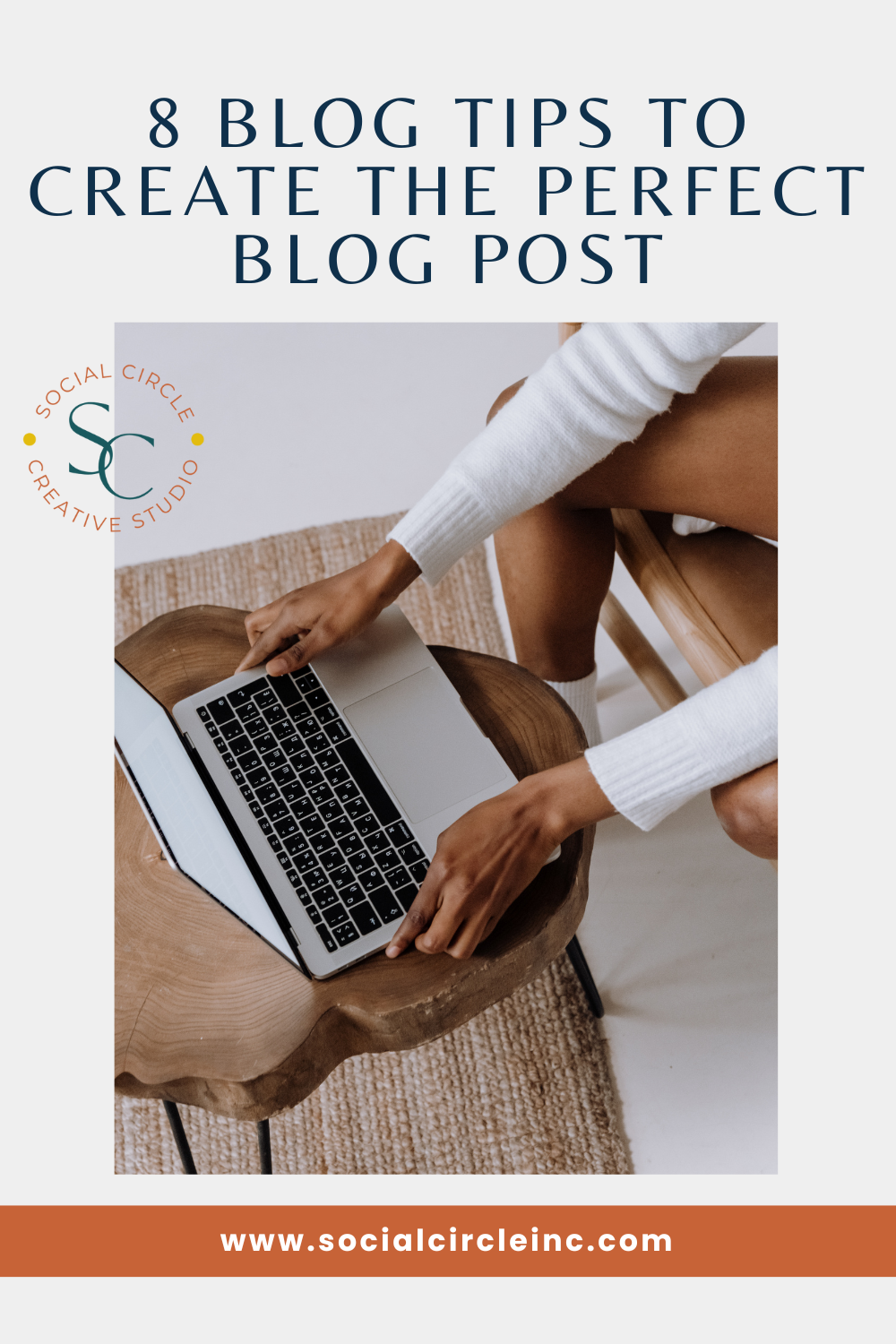You’ve come up with the perfect topic for your next blog post and you can’t wait to write. You sit eagerly at your laptop fully inspired while sipping on your green match latte. After 2 steady hours of concentration and caffeination your post is finally complete. You hit the “publish” button with a sense of accomplishment. And then… crickets! Noone reads or responds to your post and you start to wonder “if a blog post is published and noone knows about it did it even happen?”
If this song and dance sounds familiar, I totally can relate! When I first started blogging, I was so excited to share value with my audience that I didn’t take into account things like SEO (boring!), optimizing blog titles, and let alone meta descriptions. I also overlooked the importance of creating a blog domain, which helps users find your blog online. Additionally, generating new blog post ideas regularly can be challenging, and maintaining engaging content is crucial. If the mere mention of these terms gives you anxiety, no worries I’ve got you covered.
Here are 8 blog tips you can implement today to create the perfect blog post every freakin’ time you hit publish:
–
Blog Tip #1: Do Keyword Research First
Many bloggers make the mistake of doing keyword research after they’ve done the writing. If you do things that way, you’ll end up trying to plug keywords into your prose, often in awkward and unnatural ways.
The key is doing your keyword research before you start writing. You’ll not only have a clearer message to get across, but you’ll be able to sprinkle in your chosen keywords in ways that feel better to the overall piece. Keyword research is crucial for creating a new blog post that ranks well on search engines.
Blog Tip #2: Brainstorm a Catchy, SEO-Friendly Title
Whether you choose a title before or after you do the bulk of your writing is up to you. Just make sure it’s eye-catching and optimized for search engines. Many blogging platforms, like WordPress, offer tools to help create SEO-friendly titles.
An SEO-friendly title simply means that it has higher chances of ranking on results pages (SERPs) when people search on Google or Bing. For example, say you’re writing a travel blog post about your trip to the Bahamas.
Instead of titling it “My Amazing Vaca to Nassau”, a more SEO-friendly title might be “Where to Stay in Nassau” or “Best Things to Do in Nassau”. You want to make the title of your blog something that someone might actually type into a search bar.

Related Post: The Blogger’s Guide to SEO
Blog Tip #3: Create a Meta Description for Your Blogging Platform
Meta descriptions are another way to boost your ranking on SERPs and is one of those savvy blog tips that is often overlooked. They include the blurb underneath the title when it comes up on Google and gives readers an excerpt of what they can expect by clicking the link. Blogging software simplifies the creation of meta descriptions, ensuring they are the right length and optimized for search engines.
It’s another chance to include your keywords and give it your best shot hoping to earn those precious clicks to your blog. Just a couple sentences is fine and it should be short and sweet. Plus, many blog platforms like WordPress even help you out to ensure your meta description is the right length.
Blog Tip #4: Use Proper Formatting to Make It Easy to Read
When it comes to browsing the internet or asking Google a question, most people aren’t preparing to read a ton of information as if they were sitting down to read a novel, per se.
So, one of the tried and true blog tips that every blogger should remember is that making your blog more readable is all about formatting. Here, we’re talking about proper H tags for appropriate headings and subheadings, breaking things down into lists, and even using like bullet points.
Avoid long paragraphs and keep your sentence structure simple. People turn to blogs to help them solve problems or to find out more about something interesting. They’re not reading blogs to learn new words or study literature.
Unless you’re writing a literature blog…
The point is, when writing a blog, keep it simple and make things as easy to read as possible. With just a few clicks, blogging software allows you to format your blog for better readability.
Blog Tip #5: Link to Internal Blog Posts
Once you’ve gotten people reading one of your incredible blog posts, you’re missing a huge opportunity if you don’t do everything in your power to keep them there. That’s where internal links become a big deal.
As you’re writing, set up hyperlinks to any other blog posts you’ve written that dive deeper into something you mention. For example, if you’re writing about beginner blog tips today and you mention adding photos to your posts, you might link to a blog post you wrote a few months ago on simple photography hacks for bloggers.
Internal linking is especially useful in multi-author blogs (MABs), where various authors contribute content.
Hopefully, your readers will start to see you as a trusted source of information once they get a glimpse at how much content you share. Then, they’ll stay a while and come back for more.

Related Post: How to Choose the Right Lead Magnet for Your Audience
Blog Tip #6: Link to External/Authority Websites
In addition to those internal links, you’ll want to spread the love and link to trustworthy external links as well. By referencing sources of authority throughout your blogs, your readers will understand that you’ve done your homework and know what you’re talking about.
It also looks good on Google. Search engines use various parameters to determine if a result is worth a high ranking. One of those is parameters is authority. Plus, it’s a bit of extra content for your readers who might click through. Linking to authoritative sources like the Wall Street Journal can enhance your blog’s credibility.
At the end of the day, no one likes a person or business who only self-promotes. If there’s other valuable information out there (which there always is) give your readers easy access to all the juicy info.
Blog Tip #7: Add Bonus Material and Blog Post Ideas
Speaking of extra content, who doesn’t like bonus material? The answer is: no one. No one doesn’t like bonus material.
Bonus material includes freebies, content upgrades, and more. It’s up to you what you decide to give away but the idea is to give your visitors something they didn’t know they wanted and give it to them totally free with no strings attached. Bonus material can also serve as promotional content to attract and engage readers.
If you’re doing a post with blog tips for Instagram, you might create a printable checklist and add the free link to your blog. Perhaps you’re a personal trainer who trains clients at home. You could include a free home workout on your blog about the benefits of training in your living room.
Blog Tip #8: End with a Question or Call-to-Action
Then what? You’ve got your keywords and you’ve written the content. Your SEO meta descriptions are good to go and you’ve employed all the blog tips on this list. Still, there is one thing left to do.
By asking a question or using a call-to-action at the end of your blog posts, you’re initiating the next step in your relationship with a potential client. Calls-to-action can also encourage consumer-generated advertising, where readers share their own content and experiences.
Whether you’re a writer who wants your readers to simply think more about a subject or perhaps leave a comment with their thoughts or you’re a bustling entrepreneur who’s looking for newsletter subscriptions or for appointment bookings, it doesn’t matter what the call-to-action is… you just should have one.
FAQ’s
Why is keyword research important before writing a blog post?
Keyword research helps you create content that ranks well in search engines by identifying the terms your audience is searching for. This ensures your blog post is both relevant and easily discoverable.
How do I create an SEO-friendly blog title?
An SEO-friendly blog title is one that includes relevant keywords and is structured in a way that matches common search queries. Tools like WordPress can help you optimize your titles for better search engine rankings.
What is a meta description, and why is it important?
A meta description is a brief summary of your blog post that appears under the title in search engine results. It helps improve click-through rates by giving readers a snapshot of what your post is about and can include targeted keywords.
How can proper formatting improve the readability of my blog post?
Proper formatting, such as using headings, bullet points, and short paragraphs, makes your blog post easier to read and digest. This is crucial because most online readers prefer scanning content rather than reading it word for word.
What is the benefit of adding internal and external links to my blog post?
Internal links keep readers on your site longer by directing them to related content you’ve created. External links to authoritative sources boost your blog’s credibility and can improve your search engine ranking by showing that your content is well-researched.
